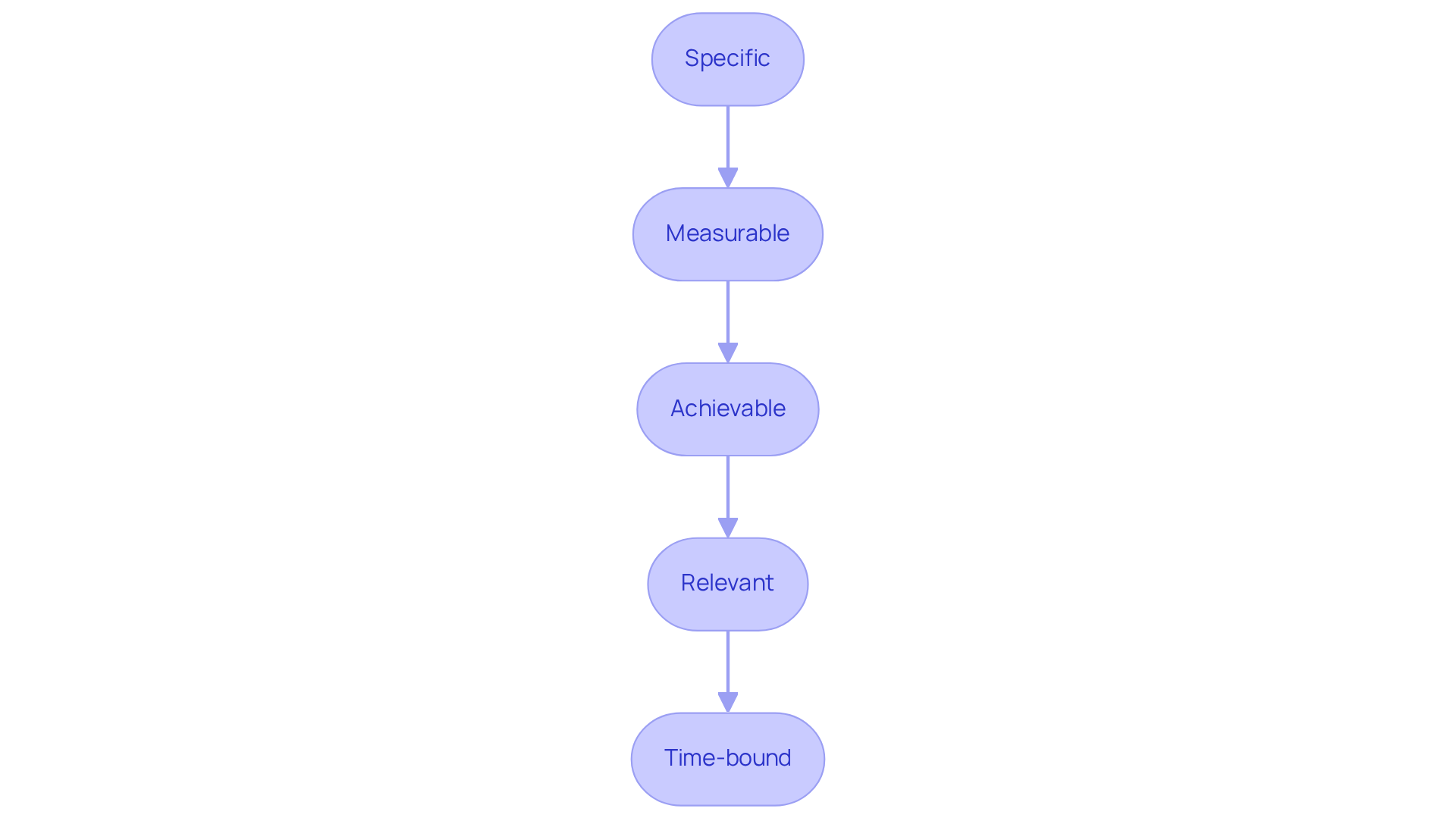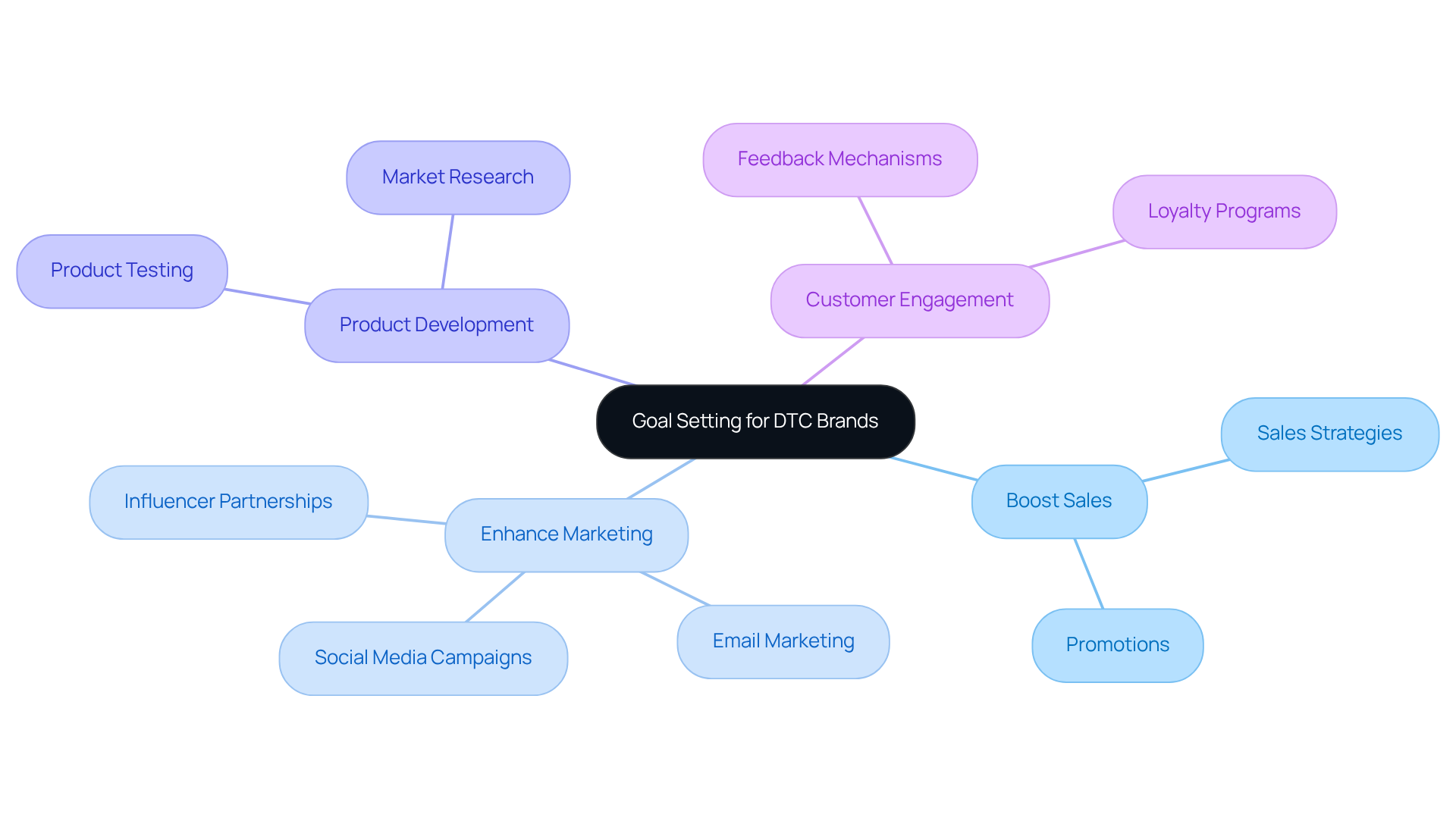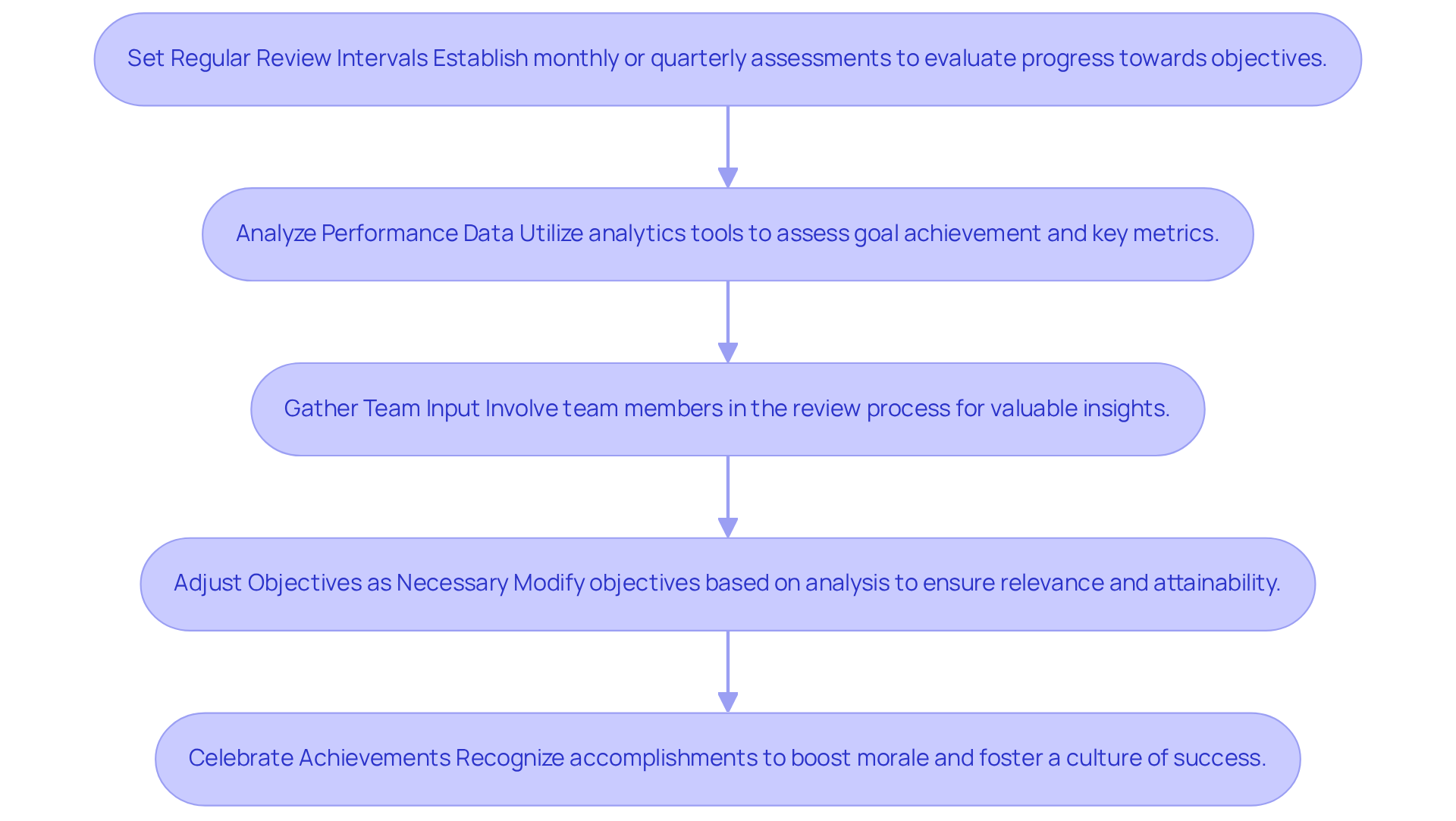
Overview
The article asserts that DTC (Direct-to-Consumer) brands must strategically map their goals to enhance performance and achieve measurable results. It underscores the critical importance of establishing SMART (Specific, Measurable, Achievable, Relevant, Time-bound) objectives. Furthermore, it advocates for the utilization of mind mapping techniques as a powerful tool to visualize these goals. Together, these strategies cultivate a culture of continuous improvement and adaptability, essential for thriving in a competitive market.
Introduction
Mapping goals is not merely a task for direct-to-consumer (DTC) brands; it is a transformative process that can define their trajectory in a competitive marketplace. By establishing clear, structured objectives, these brands can align their strategies and operational efforts to achieve significant, measurable outcomes.
However, the challenge lies in effectively defining and adapting these goals to navigate the ever-evolving landscape of consumer expectations and market dynamics.
How can DTC brands ensure their goals are not only ambitious but also attainable and relevant in the face of constant change? This guide delves into the essential strategies for mapping goals effectively, offering insights into:
- SMART objectives
- Mind mapping techniques
- The importance of regular reviews to foster continuous improvement
Understand the Importance of Goal Mapping for DTC Brands
Mapping goals is crucial for DTC companies, providing a structured approach that fosters clarity and purpose. By setting specific objectives, companies can map goals to align their marketing strategies and operational efforts in order to achieve measurable results. This process not only enhances accountability but also allows us to map goals that nurture a .
For instance, a DTC company aiming to boost its average order value (AOV) can set specific targets related to upselling and cross-selling, ensuring that all team members are aligned and aware of their contributions toward these goals. Moreover, efficient objective mapping allows brands to map goals and adapt quickly to market changes, maintaining their competitive edge in a rapidly evolving landscape.
Parah Group's transformational case studies demonstrate how strategic CRO initiatives have successfully improved performance metrics, including a 35% increase in conversion rates and a 10% rise in revenue per visitor. Industry benchmarks indicate that a target conversion rate of 2-5% is vital for success, and tracking metrics such as Customer Lifetime Value (CLV) and Average Order Value (AOV) can significantly influence profitability.
As Abby Schiano aptly noted, 'The distinction between successful entrepreneurs and those who face challenges isn’t talent or luck—it’s the discipline to establish clear objectives and execute consistently.' By ensuring that objectives are SMART (Specific, Measurable, Achievable, Realistic, Timely), DTC companies can map goals to effectively evaluate their progress and make data-informed decisions that contribute to sustained growth.

Define SMART Goals Tailored to Your Brand's Needs
To effectively define SMART goals, DTC brands must adhere to these essential steps:
- Specific: Clearly articulate what you want to achieve. For instance, instead of stating 'increase sales,' specify 'increase sales of product X by 20% in Q4.' This specificity sharpens focus on efforts and resources.
- Measurable: Establish criteria for measuring progress. This may involve tracking sales data, customer feedback, or engagement metrics. Brands employing data-driven methods, such as A/B testing and growth plans, are 2.3 times more likely to achieve their goals. For example, a brand could aim to boost its conversion rate by 10% by the end of the month, leveraging insights from comprehensive CRO strategies that have proven successful in driving revenue growth.
- Achievable: Ensure that the objectives established are realistic given your resources and market conditions. Consider previous performance and market trends; for instance, setting an objective to boost conversion rates by 10% using historical data can be both inspiring and attainable. Parah Group's case studies illustrate how companies have effectively applied strategies leading to notable increases in conversion rates and average order values.
- Relevant: Align your aims with broader business objectives. If your company is focusing on sustainability, a pertinent objective might be to enhance sales of eco-friendly products. This alignment guarantees that efforts contribute to the overall mission of the brand, prioritizing community, profitability, and long-term value creation.
- Time-bound: Set a deadline for accomplishing your objectives. This instills urgency and aids in task prioritization. For example, 'achieve a 20% increase in sales by the end of Q4' not only establishes a clear target but also encourages timely action.
By adhering to this SMART framework, DTC companies can map goals to formulate practical objectives that elevate performance and align with their overarching strategy. Regular are crucial, enabling companies to remain adaptable to market shifts and refine their strategies. As Dominika Cechova observes, 'the most crucial aspect of establishing SMART objectives for Marketing is to review them, analyze the performance and optimize for the future.

Utilize Mind Mapping Techniques to Visualize Your Goals
Mind mapping serves as a powerful tool to significantly enhance how DTC brands map goals in their goal-setting process. To implement it effectively, follow these steps:
- Start with a Central Idea: Center your main objective on a blank page or digital tool. This foundational step is crucial for your mind map.
- Branch Out: Develop branches for each major objective that supports your central aim. For instance, if your goal is to boost sales, branches may include marketing strategies, product development, and customer engagement initiatives.
- Add Details: Under each branch, create sub-branches that outline specific actions or metrics. For example, under marketing strategies, consider including social media campaigns, email marketing, and influencer partnerships.
- Use Visual Elements: Enhance your mind map with colors, images, and symbols to make it engaging and easier to interpret. This visual representation aids team members in grasping the connections between various objectives and tasks, fostering a collaborative environment. Tools like Trello can be particularly effective for translating mind maps into actionable tasks, facilitating dynamic tracking and collaboration.
- Review and Revise: Regularly revisit your mind map to adjust objectives and strategies as necessary. This practice ensures alignment with market dynamics and business goals. Remember, goals should remain fluid and adaptable, allowing for modifications based on engagement and enjoyment.
By leveraging mind mapping, DTC companies can cultivate creativity and collaboration, allowing them to map goals and transform the goal-setting process into a more dynamic and effective endeavor. Research indicates that , who constitute approximately 65% of the population, derive substantial benefits from such techniques, enhancing both retention and comprehension. As Jenny Blake, a former Google career development manager, articulates, mind mapping liberates individuals from linear thinking constraints, empowering companies to adapt and flourish in a competitive landscape. Furthermore, studies reveal that mind mapping can boost productivity by an average of 23%, establishing it as a valuable instrument for enhancing work efficiency.

Review and Adjust Goals Regularly for Continuous Improvement
To foster continuous improvement, DTC brands must adopt a structured approach for the regular review and adjustment of their goals, leveraging insights from expert Conversion Rate Optimization (CRO) strategies.
- Set Regular Review Intervals: Establish monthly or quarterly assessments to evaluate progress towards objectives. This routine keeps the team aligned and focused on their goals. Organizations that assess objectives more regularly are 31% more likely to accomplish them than those that do not.
- Analyze Performance Data: Utilize analytics tools to assess goal achievement. Key metrics to consider include conversion rates, customer feedback, and sales figures, which provide crucial insights into performance. For instance, Parah Group has assisted brands in achieving a +35% rise in conversion rates through data-informed approaches.
- Gather Team Input: Involve team members in the review process. Their perspectives can uncover valuable insights about which strategies are effective and where adjustments are necessary. Engaging team members in target setting significantly enhances their dedication and creativity, essential for executing successful CRO initiatives.
- Adjust Objectives as Necessary: Be prepared to modify objectives based on your analysis. If an objective is consistently unmet, it may require re-evaluation for feasibility or alignment with current market conditions. Parah Group emphasizes the importance of customizing strategies to meet specific client requirements, ensuring that objectives remain relevant and attainable.
- Celebrate Achievements: Recognize and celebrate when objectives are accomplished or exceeded. This practice not only boosts morale but also cultivates a culture of success and motivation. Visualization can enhance this process, as 59% of individuals who feel more confident. Acknowledging milestones can also strengthen the effectiveness of the CRO approaches implemented by Parah Group, highlighting the tangible outcomes of their efforts, such as a +10% rise in revenue per visitor.
By consistently reviewing and adjusting goals, DTC brands can remain agile and responsive to market dynamics, ensuring ongoing growth and profitability. This proactive approach is essential in a competitive landscape where customer acquisition costs are rising and consumer expectations are evolving. It aligns perfectly with Parah Group's mission to drive sustainable growth and profitability through innovative CRO strategies.

Conclusion
Mapping goals effectively stands as a pivotal strategy for DTC brands seeking clarity and measurable success. By embracing a structured approach to goal setting, these companies can align their marketing efforts with operational strategies, fostering a culture of continuous improvement. This focus on clear, specific objectives not only enhances accountability but also empowers brands to adapt swiftly to market changes, securing their competitive edge.
The article highlights several key insights, particularly the necessity of defining SMART goals—specific, measurable, achievable, relevant, and time-bound. Through mind mapping techniques, DTC brands can visualize their objectives, transforming the goal-setting process into a dynamic and collaborative endeavor. Furthermore, regular reviews and adjustments of goals are crucial for continuous improvement, enabling brands to remain agile and responsive to evolving market conditions.
In conclusion, the importance of effective goal mapping in driving the success of DTC brands is undeniable. By adopting these strategies, companies can enhance their operational performance while cultivating a culture of innovation and responsiveness. It is essential for DTC brands to prioritize goal mapping as a fundamental component of their strategic planning, ensuring they are well-equipped to navigate the complexities of the market and achieve sustainable growth.
Frequently Asked Questions
Why is goal mapping important for DTC brands?
Goal mapping is crucial for DTC companies as it provides a structured approach that fosters clarity and purpose, allowing companies to align their marketing strategies and operational efforts to achieve measurable results.
How does goal mapping enhance accountability within a DTC company?
By setting specific objectives, goal mapping ensures that all team members are aware of their contributions toward these goals, thereby enhancing accountability within the organization.
Can you give an example of how a DTC company might use goal mapping?
A DTC company aiming to boost its average order value (AOV) can set specific targets related to upselling and cross-selling, ensuring alignment among team members.
How does efficient goal mapping help DTC brands adapt to market changes?
Efficient objective mapping allows brands to quickly adapt to market changes, helping them maintain a competitive edge in a rapidly evolving landscape.
What performance improvements have been seen from strategic goal mapping initiatives?
Parah Group's case studies show that strategic CRO initiatives have led to a 35% increase in conversion rates and a 10% rise in revenue per visitor.
What is the target conversion rate for DTC brands to be successful?
Industry benchmarks indicate that a target conversion rate of 2-5% is vital for success.
Which metrics should DTC brands track to influence profitability?
DTC brands should track metrics such as Customer Lifetime Value (CLV) and Average Order Value (AOV) to significantly influence profitability.
What does SMART stand for in the context of goal setting?
SMART stands for Specific, Measurable, Achievable, Realistic, and Timely, which are key criteria for establishing clear objectives.
How do clear objectives contribute to the success of DTC companies?
Clear objectives allow DTC companies to effectively evaluate their progress and make data-informed decisions that contribute to sustained growth.
FAQs











